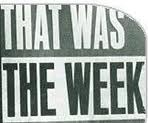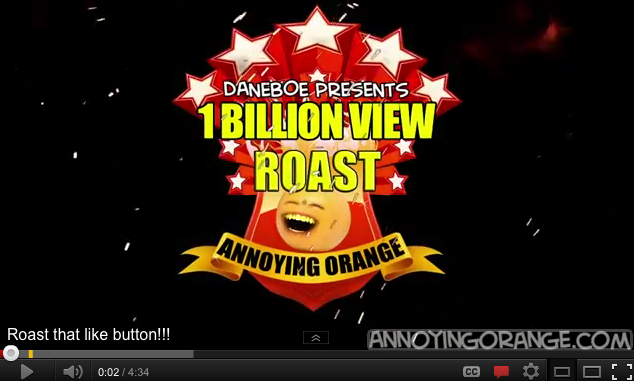This was a very busy week for news in both the blogosphere and the content world, so this post will probably be newsier than most. Dig in, and I promise, there'll be some long reads popped in as well.
 But first: on Monday I gave a lecture on the emerging market for transmedia this week which I call "Transmedia Sorting Hat." Check out the presentation slides and notes if you missed that post. I incorporated some wonderful new discoveries and content, including an info graphic from Steve Peters and a look at the work of Jan Libby. Related links: Musician and protogeek Thomas Dolby is interviewed by Steve Peters (audio) about his big project, The Map of the Floating City, on ARGNetcast. Transmedia and ARG producer Jan Libby is interviewed (in text) by a Berlin site.
But first: on Monday I gave a lecture on the emerging market for transmedia this week which I call "Transmedia Sorting Hat." Check out the presentation slides and notes if you missed that post. I incorporated some wonderful new discoveries and content, including an info graphic from Steve Peters and a look at the work of Jan Libby. Related links: Musician and protogeek Thomas Dolby is interviewed by Steve Peters (audio) about his big project, The Map of the Floating City, on ARGNetcast. Transmedia and ARG producer Jan Libby is interviewed (in text) by a Berlin site.
SOPA, ETC.
Certainly the biggest news from the digisphere this week was the astonishing collapse of the effort to pass restrictive bills targeting internet piracy. Both the House and Senate versions were dead by Friday, victim of an amazing run of events this week, starting with a cautionary announcement from the Obama White House (which may cost him campaign contributions from some studios and other Hollywood types) and capped by a day-long protest online, as many sites went dark or urged their audience to call or email their legislators. The MPAA, which dominated the coalition that pushed the bills, has cried Uncle, with its President and former Senator Chris Dodd admitting as much.
Related, of course, was the Justice Department shutdown of file-sharing site MegaUpload, and, in retaliation, some of the most widespread hacker attacks, with responsibility claimed by Anonymous.
And perhaps coincidentally, the Supreme Court decided to rule this week that Congress should be able to "re-copyright" public domain works. Wow.
CONTENT & DISTRIBUTION
Analyst Will Richmond posits that we're entering a virtuous circle for "online-only original" production (what GigaOm this week calls the "golden age of content"), taking on Marc Cuban who is the biggest cheerleader for conventional broadcasting one can find. Cuban himself was in the news with the announcement of AXS, a reformulation of his HDNet channel with heavyweight partners AEG, CAA and Ryan Seacrest. Andy Wallenstein at Variety focuses on the channel's innovative business model. Cuban's partner AEG is front and center in a well-researched New Yorker profile called "The Man Who Owns L.A.," namely AEG's Tim Leiweke (and his boss, Phil Anschutz).
Sundance 2012 launched this week with a flood of reviews, gossip and all the rest. I found the opening remarksfrom Redford and his Sundance colleagues on alternative forms of distribution pretty interesting
YouTube announced its own short film festival this week, as well, called "Your Film Festival" in conjunction with Ridley Scott, the Venice Film Festival and Emirates airline. Big prize is half a million bucks for production.
Speaking of new forms of distribution, Marc Schiller and Mike Lee of Bond Strategy posted a smart piece on Tribeca's site about film marketing and the social graph.
Speaking of YouTube, the New Yorker's John Seabrook baked a nice slice about the pending shift of the video site towards professional channelization. Nothing really new, but it's mainstreaming the obvious.
Nature, the UK-based science journal, ran an interesting story about how scientists are now beginning to use crowd-sourcing sites like Kickstarter to fund their research. Fascinating.
Also, the LATimes' "Hero Complex" blog digs into the "making of" the new STAR WARS: OLD REPUBLIC video game, calling it 'a galactic gamble.'
EDUCATION AND PUBLISHING
Apple made a big announcement this week focusing upon the educational and e-textbook markets, with predictable mega-coverage. Some analysts decried the move as greedy and evil. Or Apple at its Absolute Worst, shouts Business Insider. Other coverage compared Apple's strategy to Amazon's failed bid to capture the textbook market three years ago. The Atlantic offers a longer read, namely a brief history of textbooks, calling Apple's announcement "actually revolutionary." Harvard's Nieman Journalism Lab offered four lessons for news organizations, though I found them useful and I'm neither.
Twitter bought news delivery platform Summify this week, evidently with the goal of ingesting the Vancouver-based team that built it, as TechCrunch reports, noting that some of its features are being disabled. Web designer Mike Davidson offers insight into why: as does WIRED. I'm a daily Summify user, and I find its daily email summaries quite useful as a filtering device, along with Zite and Pulse on my iPad. I hope Twitter doesn't screw it up.
COMPANIES
- Kodak files for bankruptcy.
- Jerry Yang resigns from Yahoo.
- Google misses its numbers Lots of controversy over a move by Google to emphasize its own social network (Plus) in search results. Here's an especially pointed post by John Battelle, suggesting that Google may succeed in forcing brands (and people) to use its social network in order to show up in search results.
 Friday, January 27, 2012 at 12:38 PM by
Friday, January 27, 2012 at 12:38 PM by  Nick DeMartino
Nick DeMartino 
 HTML5,
HTML5,  VOD,
VOD,  Vimeo,
Vimeo,  YouTube,
YouTube,  cable TV,
cable TV,  social-tv,
social-tv,  television,
television,  web-video in
web-video in  Hollywood,
Hollywood,  Media,
Media,  NGIF,
NGIF,  best-of,
best-of,  documentary,
documentary,  indie,
indie,  lists,
lists,  movies,
movies,  opinion,
opinion,  technology,
technology,  television ,
television ,  transmedia,
transmedia,  weekly
weekly  Print Article
Print Article 
